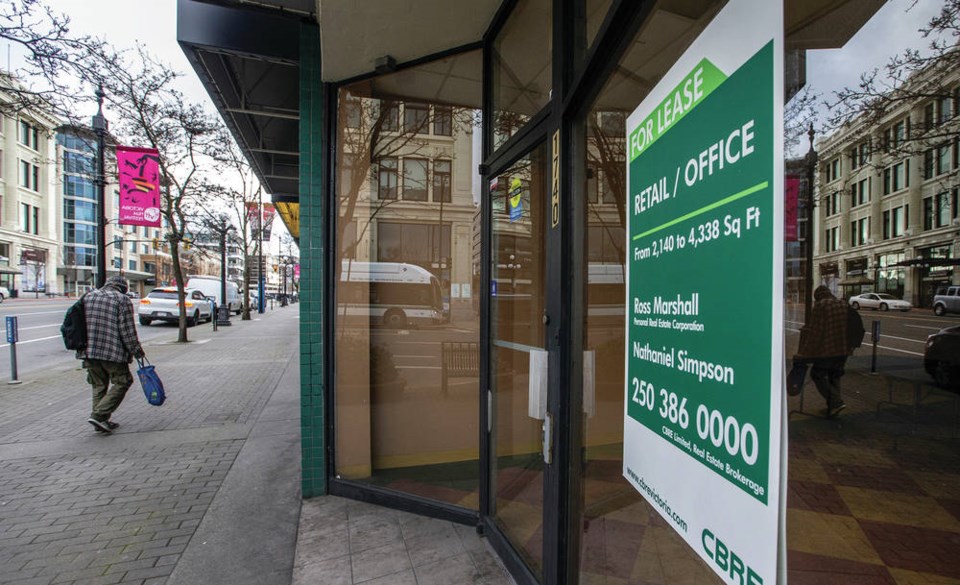Government offices and private companies, having put expansion plans, moves and changes on hold through much of the pandemic, are starting to wake from hibernation, according to an expert on Victoria’s commercial real estate market.
Tristan Spark, vice president at Colliers International, said some companies are starting to look for new space or for ways to expand their footprint having shelved plans amid the uncertainty last year.
“We’re just now starting to see people take their fingers off the pause button and I expect that to continue as we get further into 2021,” said Spark.
When the pandemic took hold last spring many offices, both private and government, had their employees work from home where possible and put on hold major decisions on expansion, downsizing or moving offices until they better understood what a second wave of the pandemic might look like.
Spark said with the vaccine rollout underway, there is a sense of optimism and plenty of activity.
“The leasing side of things is still slow, but hopefully with the vaccine rollout we will start to see more tenants ready to make longer-term plans,” he said.
Those longer-term plans include finding larger spaces to accommodate more physical distancing in offices, a trend Spark believes will be around for a while.
Spark said while there’s not a lot of tenants shopping for space, the ones he has been touring around have been bringing up things like more space for physical distancing and wanting more rooms to be able to separate people rather than one big open room.
“This is planning for the long-term,” he said. “The days of packing in people as tightly as you can into smaller open-floor plans is probably over as a trend.”
Colliers released its year-end office market report Wednesday showing the tendency to stay put amid the pandemic resulted in the office vacancy rate rising only slightly by year’s end. In the fourth quarter it was 6.2 per cent, up from 5.9 per cent in the third quarter.
Spark said he expects that to continue to rise slowly this year, as some space is expected to come back to the market in the second quarter. He predicts by the end of the year the vacancy rate could hit as high as 7.5 per cent.
However, that would still be below the 10-year average for the region, which is about eight per cent.
According to Colliers, Victoria’s overall stability is due to the sheer size of the public sector and the amount of office space the federal, provincial and municipal governments take up.
The Colliers report noted there is just over 214,000 square feet of new office space under construction, and Spark believes that will be absorbed by the market, with companies and government fleeing to quality and leaving behind Class B and Class C spaces.
“What we find happens is the lower-class ones get repurposed as residential or someone comes along and renovates hoping to get higher rents,” he said.



